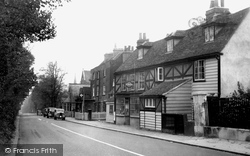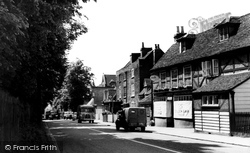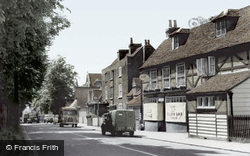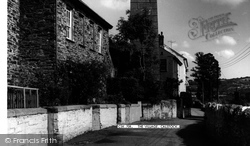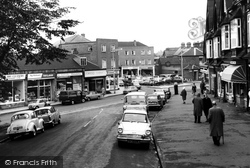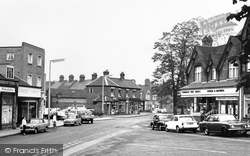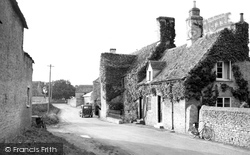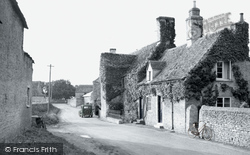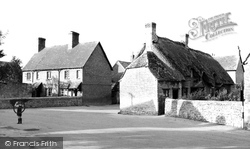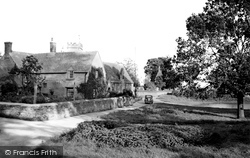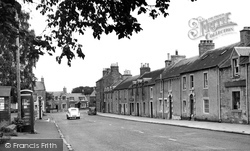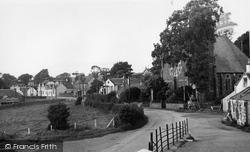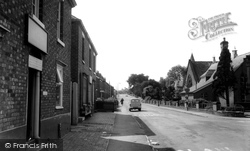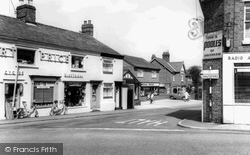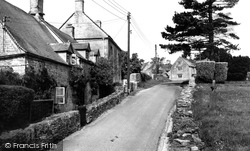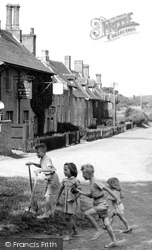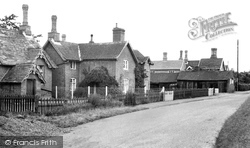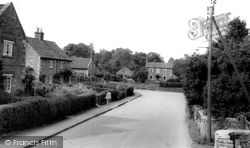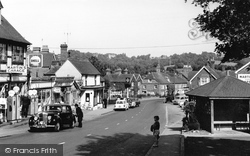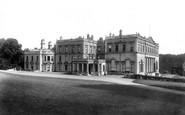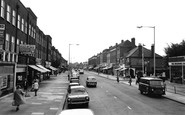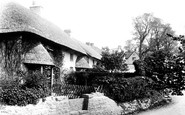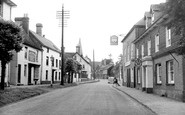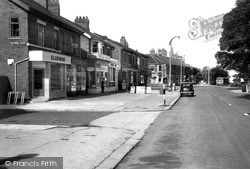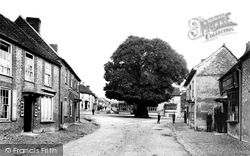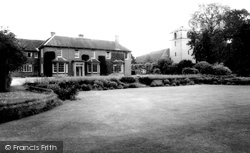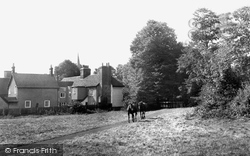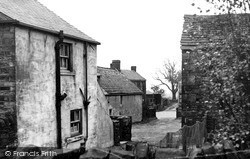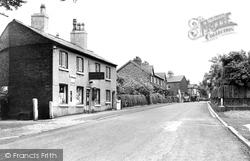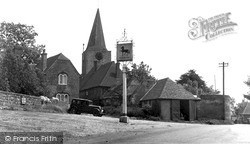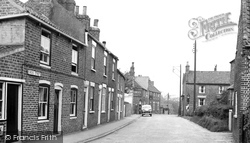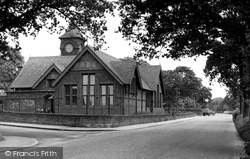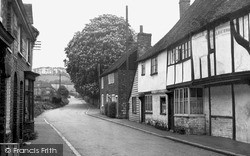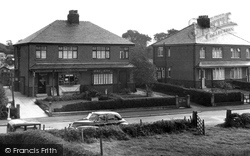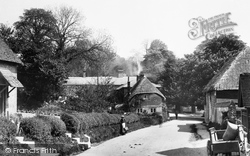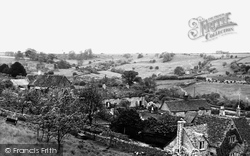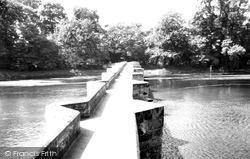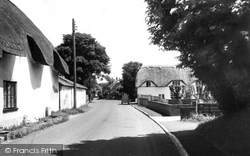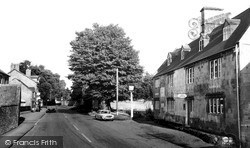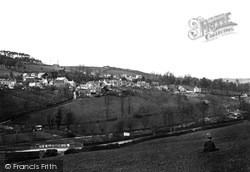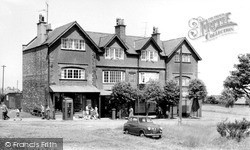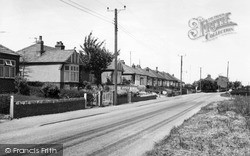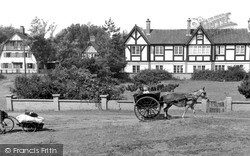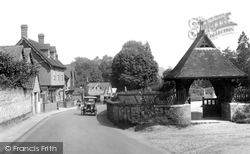Places
5 places found.
Those places high-lighted have photos. All locations may have maps, books and memories.
Photos
9,649 photos found. Showing results 1,641 to 1,660.
Maps
18 maps found.
Books
13 books found. Showing results 1,969 to 13.
Memories
4,612 memories found. Showing results 821 to 830.
Crichel House During The War Years
Dumpton House (Preparatory) School was evacuated to Crichel during the Second World War from Broadstairs in Kent. My older brother (Paul Cremer) was already at the school and due to the war my parents sent me ...Read more
A memory of Crichel Ho in 1940 by
Barkingside In The 1960s
I remember growing up in Barkingside in the 1960s, going to the State cinema on Saturday mornings, the trolly buses that ran along the high road, Green & Dyson groceries where my mum worked, Fairlop School 1961-66. ...Read more
A memory of Barkingside in 1860 by
Molly Keeler
Myself and my 2 sisters and my brother lived in cottages at Hall Road near Aldborough Hall. We all use to walk all the way to Aldborough School in all weathers. My brother's name was Alan and my sisters' names were Ann ...Read more
A memory of Aldborough in 1930 by
Continue
A unit of The Army Cadet Force was formed in Farmborough, with headquarters at Bath, about ten or a dozen lads joined. The National Service was then still operating, which us lads expected to be called into, being a cadet would ...Read more
A memory of Farmborough in 1954 by
Growing Up In Woolton
My family from many generations back have liven in Woolton and Gateacre. I grew up in a house opposite the English Rose pub and went to Out Lane primary school. We spent our summer days playing in the orchard by Watergate ...Read more
A memory of Woolton by
Old Village Barry
Not wishing to sound pedantic, but (with reference to another 'memory' posted about this photo) I'm pretty sure the photo shown is of the cottages on Old Village Road Barry, and not buildings adjacent to Cadoxton school which is a ...Read more
A memory of Barry by
My Grandfather
My grandfather owned the corner shop in the High Street, it was a sweet shop. He was known as Pop Brooks. Grandad was loved by the villagers. His only son, Harry, my dad, was killed on 20th December 1942. My dad's name was Harry ...Read more
A memory of Lindfield in 1943 by
Evacuated To Great West Farm
My mother Eileen and her brother Ian Carter were evacuated to Great West Farm, Quethiock in 1940. Here are her memories of that time:- On June 16th 1940 we were evacuated from Marvels Lane School, Grove Park, London ...Read more
A memory of Quethiock by
1960’s
I remember Stanford Dingley when the cottages existed opposite Dumbledore on Jennets hill, they used the water pump opposite. A fire destroyed the semi-detached house opposite where Casey Court now stands. There was a post office ...Read more
A memory of Stanford Dingley
Dunstaffnage War Years
Like your other contributors I also spent my very early years in Dunstaffnage. Dad had spent the early part of the war from day one as a young Engineer Officer on North Atlantic convoys in the Merchant Navy. When you were lucky to ...Read more
A memory of Oban by
Captions
5,016 captions found. Showing results 1,969 to 1,992.
The parade of shops (left) proclaims that a once quiet seaside village is becoming a busy township - we can see Ellwood's, the Midland Bank, a chemist, and a newsagent and tobacconist.
The old elm tree stands in the village square. It was felled in the 1980s after it became dangerous and replaced with an oak tree in 1986. The Bell Inn is behind the tree.
This timeless picture shows the quintessential English church and adjoining manor.
The spire in the background is that of St Mary's, and this view has not changed.
This farming village is not far from Silkstone. Most of the cottages were built in stone from the Greenmoor Quarry.
The post office and general store were essential parts of village life, so not surprisingly they feature on many of Frith's postcards; these were later sold at the post office counter and the village store
One of the few thatched buildings in the area, the Duke's Head is no longer a public house.
This is one of Kent's most haunted villages. Ghost hunter Andrew Green recently looked into these tales for a new book, and found only one haunting still allegedly occurring.
This street, in one of the largest of the Holderness coastal villages, used to be called Poskett Lane.
The village of High Legh probably gets its name because it was an early settlement in a forest clearing sitting on high land.
Evidence that this village existed in Roman times was unearthed just after the Second World War.
W J Seddon was a grocer, a newsagent and other things besides, a very useful shop in a rural area, especially as every time a villager went into Poulton, the Shard Bridge toll had to be paid.
Wherwell is famous for its ruined priory, established by the Saxon Queen Elfreda, mother of Ethelred the Unready, possibly as an act of repentance following several dark deeds.
Chedworth is a sprawling village with Cotswold stone cottages that cling to the valley sides.
This delightful old stone pack-horse bridge has stood here since the 16th century. It is named after the Earls of Essex, who lived at Chartley Hall.
This is another picturesque Hampshire village, home to a good selection of perfect whitewashed thatched cottages.
This village must qualify for having had one of the most short-lived halts in railway history.
Lying deep in a long valley, Woodchester is often missed by visitors to the Cotswolds, but should not be: it has an attractive curved main street, and some charming old cottages.
Mention of a Roman signal station in the Domesday Book in 1086 dates the history of this area back as far as the fourth century.
This is not actually a Roman bank, but one constructed in Saxon times to protect the villages in the fens from flooding.
The Estate Office was built in 1925, and was originally known as Barn Hall.
Considered to be the oldest house in the village, the Jolly Gardeners is now a private dwelling. In the distance on the right stands the parish church, which dates from Norman times.
Once known for its mines and caves, West Harptree sits between the Mendip ridge and Chew Valley Lake.
These vehicles are passing through the village long before today's bypass was created. On the fast A24 dual-carriageway road, signs once warned of 'deceptive bends'.
Places (5)
Photos (9649)
Memories (4612)
Books (13)
Maps (18)


